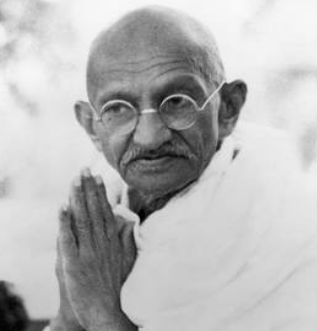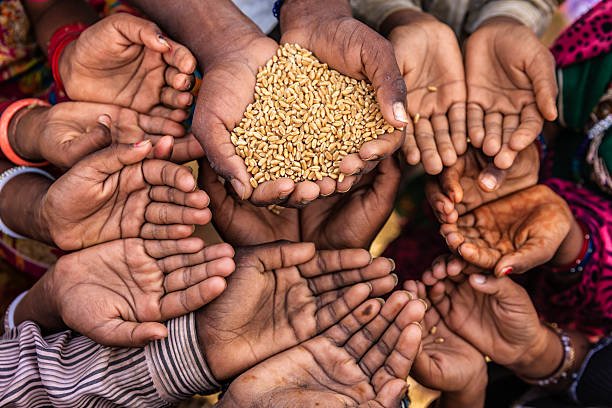NO POVERTY (A UNREALISTIC UTOPIA OR A HOPE FOR BETTER FUTURE)

“There is enough for everybody’s need and not for everybody’s greed.”
– Mahatma Gandhi
Poverty is one of the most pressing issues of our time. It is a complex and multi-dimensional phenomenon that affects people of all ages, genders, races, and backgrounds. Poverty is not just about income, but it is also about access to basic services such as education, health care, and clean water. It is about the lack of opportunities, social exclusion, and discrimination. Poverty is a global challenge that requires urgent action.
The United Nations has recognized the urgency of addressing poverty by including it as the first of the 17 Sustainable Development Goals (SDGs) adopted in 2015. The goal is to “end poverty in all its forms everywhere” by 2030. The SDGs are a call to action for governments, businesses, civil society, and individuals to work together to create a more sustainable, equitable, and prosperous world.
Poverty is a major barrier to human development. It hinders progress in health, education, and economic growth. It undermines social cohesion and exacerbates inequality. Poverty affects not only individuals and families but also communities and entire countries. It perpetuates a cycle of deprivation and exclusion, limiting opportunities and hindering the full realization of human potential.
To achieve the goal of no poverty, it is necessary to address the root causes of poverty and inequality. This requires a comprehensive approach that goes beyond providing assistance to those in need. It involves addressing the structural and systemic issues that perpetuate poverty and exclusion, such as unequal access to resources, lack of opportunities, discrimination, and marginalization.
Governments have a critical role to play in ending poverty. They must create policies and programs that promote economic growth, social inclusion, and access to basic services. This includes investing in education, health care, and infrastructure, as well as promoting gender equality and social protection. It also involves ensuring that economic growth benefits everyone, particularly the most vulnerable and marginalized populations.
Businesses also have a critical role to play in ending poverty. They must create economic opportunities that benefit all members of society, including marginalized populations. This includes investing in sustainable and inclusive business models, promoting decent work, and supporting small and medium-sized enterprises. It also involves taking responsibility for the social and environmental impacts of their operations.
Civil society and individuals also have a critical role to play in ending poverty. They must hold governments and businesses accountable for their commitments to ending poverty and promoting social inclusion. This includes advocating for policies and programs that address the root causes of poverty, as well as supporting community-led initiatives that empower marginalized populations.
Ending poverty requires collective action and a commitment to social justice. It requires a transformation of our economic, social, and political systems to create a more equitable and sustainable world. By working together, we can create a world without poverty, where everyone has the opportunity to thrive and reach their full potential.
In conclusion, no poverty is not just a goal, but a necessity for a better future. Poverty undermines human dignity, hinders human development, and perpetuates inequality. Achieving the goal of no poverty requires a comprehensive approach that goes beyond providing assistance to those in need. It involves addressing the root causes of poverty and inequality, promoting economic growth, social inclusion, and access to basic services, and ensuring that everyone has the opportunity to reach their full potential. Let us work together to create a world without poverty, where everyone has the opportunity to thrive and live a dignified life.

No poverty is one of the Sustainable Development Goals set by the United Nations to be achieved by 2030. This goal aims to eradicate extreme poverty and reduce poverty in all its forms and dimensions. India is a developing country with a population of over 1.3 billion people. Despite significant economic growth in recent years, poverty remains a significant issue in India. In this article, we will explore the current state of poverty in India, the causes of poverty, and the efforts made to eradicate it.
The Current State of Poverty in India
India is home to the largest number of people living in poverty in the world. According to the World Bank, over 270 million people in India lived below the poverty line in 2016. The poverty line is defined as those living on less than $1.90 per day. The poverty rate in India has been declining in recent years, but progress has been slow. In 2011, the poverty rate was 21.9%, which decreased to 9.2% in 2019. However, the COVID-19 pandemic has reversed some of this progress, with an estimated 75 million people falling into poverty in 2020 alone.
Poverty in India is not evenly distributed. The states of Bihar, Jharkhand, and Uttar Pradesh have the highest poverty rates, while the states of Goa, Kerala, and Sikkim have the lowest poverty rates. Poverty is also more prevalent in rural areas than in urban areas. According to the National Sample Survey Office, the rural poverty rate in India was 30% in 2019, while the urban poverty rate was 9.6%.
Causes of Poverty in India
There are many factors that contribute to poverty in India. One of the primary causes is a lack of access to education. Education is critical for economic growth, as it provides people with the skills they need to obtain good jobs and improve their standard of living. However, many people in India do not have access to quality education, particularly in rural areas. According to the 2011 Census, the literacy rate in rural areas was 68.9%, while the literacy rate in urban areas was 84.9%.
Another factor that contributes to poverty in India is a lack of access to healthcare. Poor health can prevent people from working and earning a living, and can also result in high medical bills that can push families into poverty. Despite significant improvements in healthcare in recent years, many people in India still do not have access to quality healthcare, particularly in rural areas.
Agriculture is a significant sector in India, employing nearly half of the workforce. However, many farmers in India are small-scale farmers who do not have access to modern technology, such as irrigation systems and fertilizers, which can increase crop yields. This results in lower incomes and a higher risk of poverty.
Finally, corruption is also a significant cause of poverty in India. Corruption diverts resources away from those who need them the most, resulting in a lack of access to basic services such as healthcare, education, and infrastructure.
Efforts to Eradicate Poverty in India
The Indian government has implemented various programs and policies to address poverty in India. One of the most significant programs is the Mahatma Gandhi National Rural Employment Guarantee Act (MGNREGA), which guarantees 100 days of wage employment to every household in rural areas. This program has been successful in providing employment opportunities to rural households and reducing poverty in rural areas.
The Indian government has also implemented various social welfare programs to support vulnerable populations, such as the National Social Assistance Program, which provides financial assistance to the elderly, widows, and disabled people, and the Pradhan Mantri Awas Yojana, which provides affordable housing to the poor.
CLICK HERE TO READ ANOTHER ARTICLE